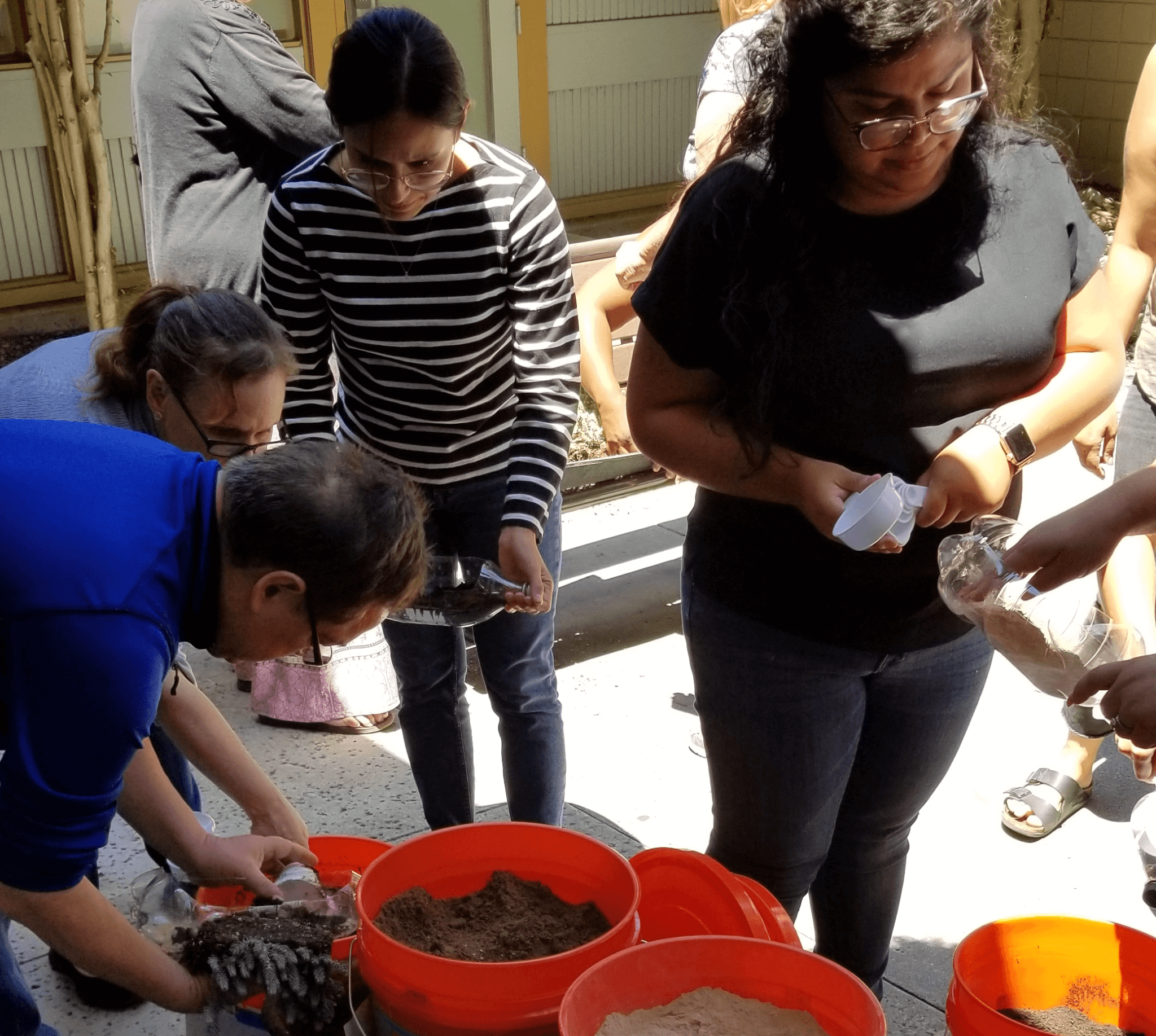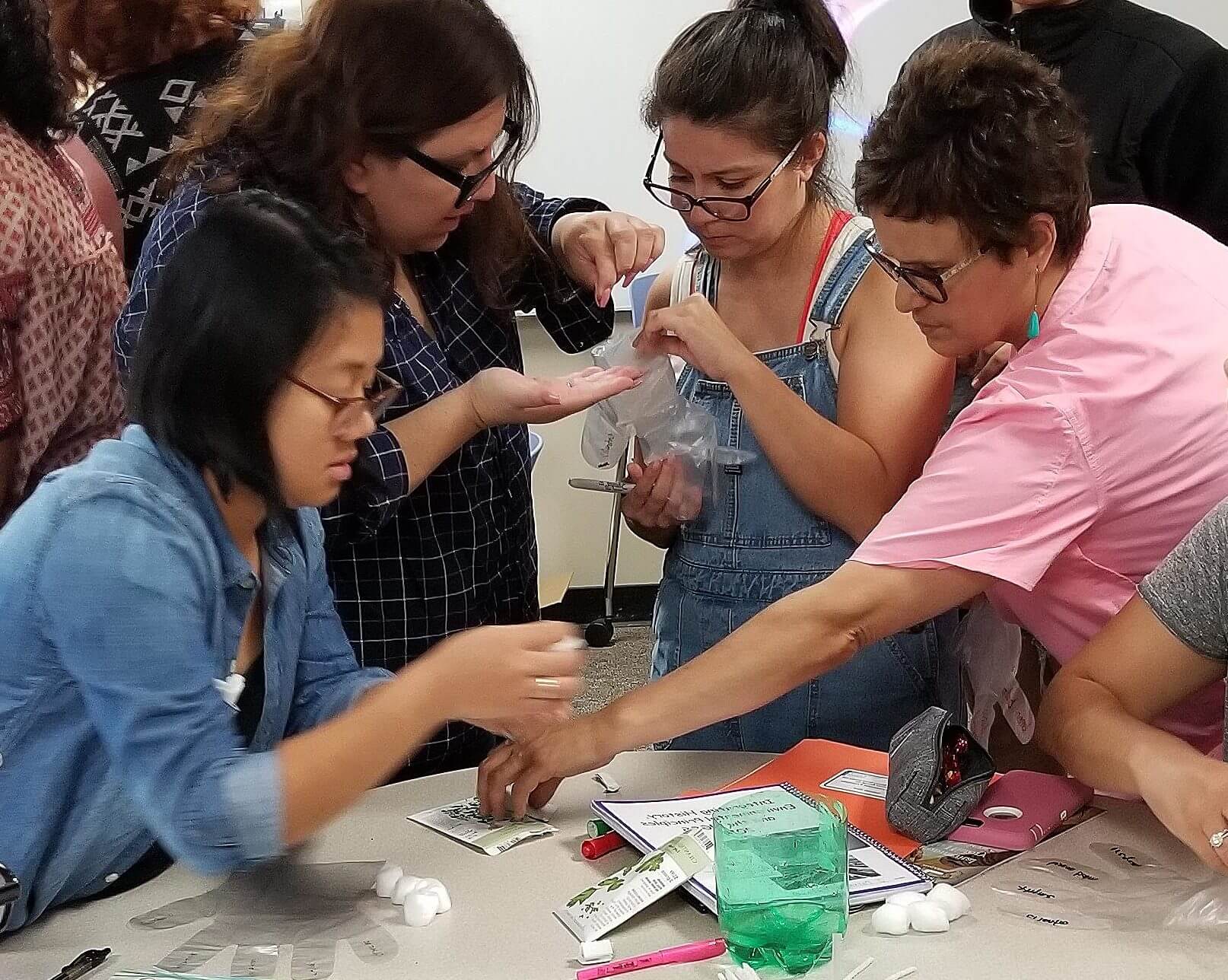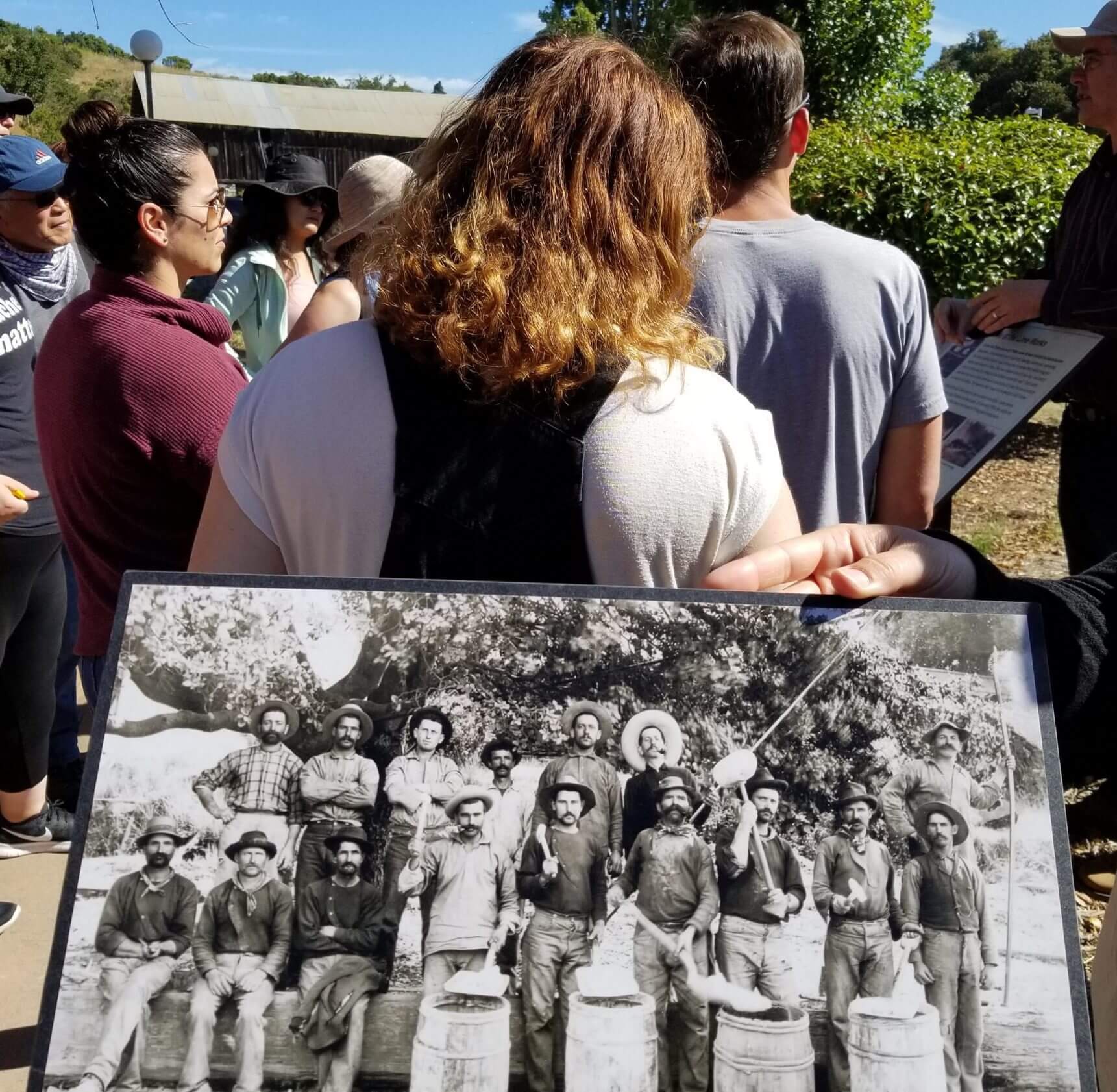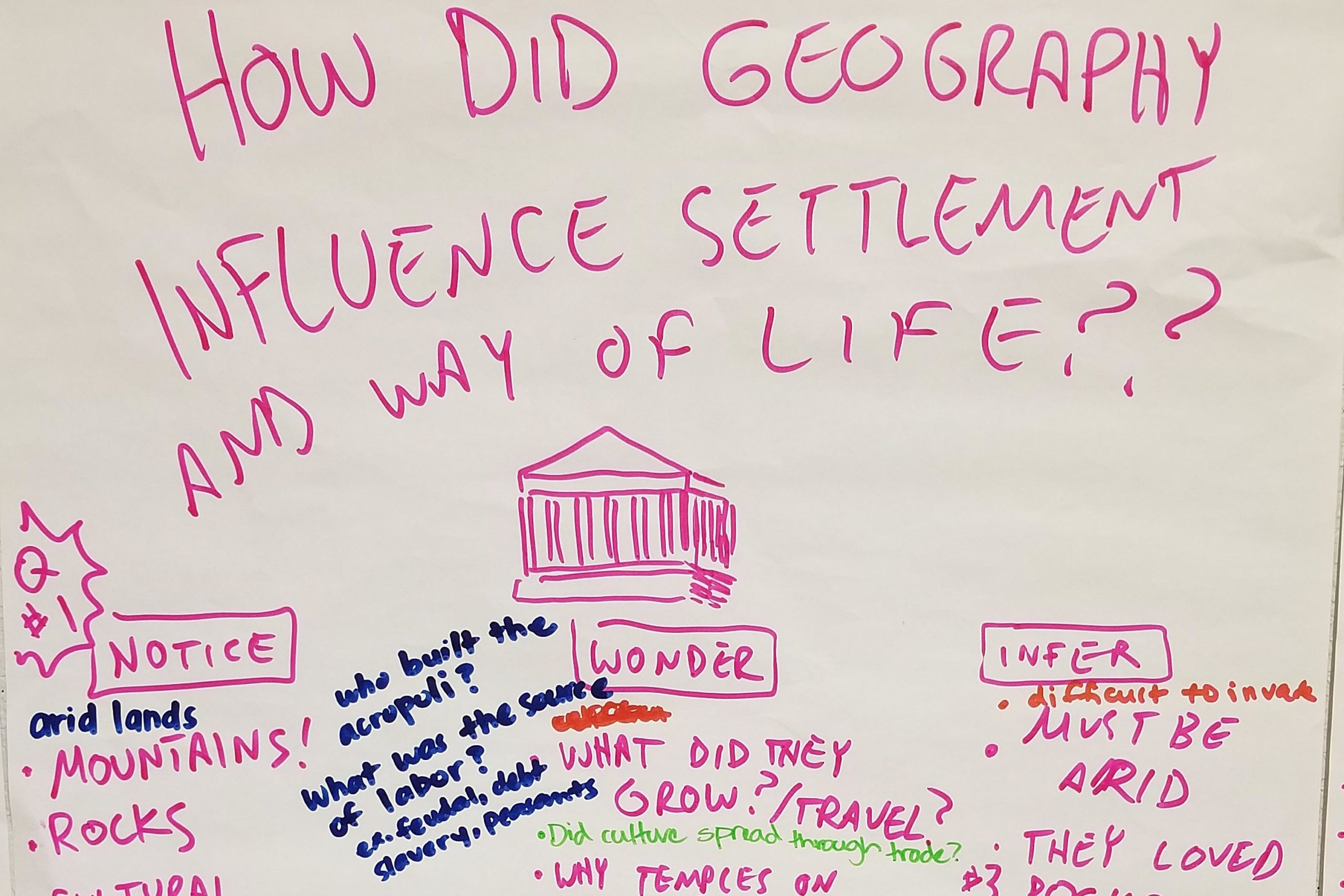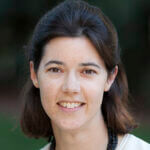Even though our classroom at California State University, Dominguez Hills (CSUDH) sat adjacent to a parking lot in the midst of an extensive construction zone, the three-day teacher institute was punctuated multiple times with cries from a hawk perched in one of the few eucalyptus trees nearby. It was a ripe opportunity to think about California’s Environmental Principles and Concepts—in fact, several teachers were quick to point out evidence of people’s influence on the natural world. We were surprised and delighted that a large raptor like this could survive in an area that has been so dramatically altered by human activities. It turned out that as we spent time pondering the hawk’s habitat, it would leave an even greater impression on us.
With the door open to enjoy fresh air, we unintentionally welcomed the hawk into the classroom.
The hawk spent several minutes flying around the room before finding its way safely back out. It was a dramatic moment that reminded us how all of our actions are connected to the Earth and its inhabitants. The experience prompted us to think about what that landscape looked like before the university was built—what ecosystems operated there, who inhabited that space, and how they lived and interacted with the natural world. This was, indeed, why we were all gathered there for the institute: to examine the interconnections between history, science, and our environment.
The Environment in the Elementary Classroom, hosted by The CSUDH History Project, welcomed K–6 teachers to explore the integration of environmental principles into history–social science and science instruction, using the content in each to reinforce learning in the other subject area. As the environmental literacy coordinator for the California History-Social Science Project, I had the pleasure of working with the teachers at CSUDH, as well as at two other institutes at University of California (UC), Santa Cruz and UC Davis.
In Dominguez Hills, teachers explored how to blend history and science content standards through multiple activities. For example, teachers had hands-on time with Next Generation Science Standards (NGSS)-aligned lessons about soil and soil conservation while applying information from children’s books about Dr. George Washington Carver’s traveling agricultural school of the early twentieth century and innovative farming practices in contemporary Honduras. Teachers also studied the history of the LA River and conducted an NGSS-aligned lesson on water filtration while reviewing the book A River Ran Wild about the historical uses, decline, and restoration of the Nashua River in New England. On the final day, teachers explored the 1930s Dust Bowl and its environmental and social consequences by reading a series of firsthand accounts offered by children and adults from the Great Plains in Voices of the Dust Bowl. Teachers followed this with an NGSS-aligned lesson on erosion that built upon the previous days’ activities related to soil and water. For the institute’s capstone, they completed a group project to construct a robust landscape (in a bottle!) that resisted water run-off.
Teachers were enthusiastic about the opportunity to use the environment to engage their students in learning content as well as historical thinking and engineering skills. These teachers chose to attend the institute because they care about the environment—and they reported that their students do, too.
A fifth grade teacher shared that one of her students recently exclaimed: “I want to become a politician who will make and defend laws that protect the environment.”
Given students’ ambitions, and a great global need for environmental protection, teachers were highly motivated to bring these new ideas, lessons, and resources back to their classrooms. Thanks to generous funding from Ten Strands and others, The Dominguez Hills History Project sent teachers home with at least three books of their choosing. (Book titles are listed at the end of this post.)
Two other 2019 environmental literacy summer institutes brought together elementary through high school teachers for Landscapes in History, hosted by The History and Civics Project at UC Santa Cruz and The History Project at UC Davis. These four-day institutes supported teachers as they integrated an environmental lens into an inquiry-based classroom lesson aligned with California’s History–Social Science Framework. Focusing on landscapes—agricultural, wild, urban, and suburban—teachers examined historic and contemporary land use and policy at the local, regional, national, and global levels. Our goals for the institutes were twofold:
- support teachers in deepening their students’ history–social science content knowledge and disciplinary skills, and
- support students in becoming responsible and informed citizens who are aware of and able to tackle environmental challenges.
Each Landscapes in History institute included an Indigenous Californian speaker who discussed native peoples’ relationships to the land in the past as well as the present; presentations from world and United States historians covering topics such as resource-driven migration, environmental catastrophes like the Dust Bowl and the near-disappearance of the Aral Sea; and historic housing discrimination including the health and environmental consequences of red-lining.
Teachers went out-of-doors to “read a landscape” for what it reveals about historic and current human interactions with the environment.
A tour of the abandoned Cowell Lime Works mining operation in Santa Cruz gave teachers the chance to develop ideas for local field trips to engage students in thinking about the city’s development around the harnessing of natural resources. At UC Davis, teachers followed an arboretum docent for a two-hour walk through the riparian landscape rich with history, thinking about how various peoples over time relied upon and shaped the local environment.
Teachers from both of the Landscapes in History institutes recently reconvened to share lessons and student work, and to continue the conversation about how to integrate environmental literacy into their history-social science classroom. We learned that the institutes helped prompt some teachers to revise their curriculum to focus on big themes, such as the movement of people, ideas, and products in the medieval and early modern periods, as well as to draw clear connections to the geography, natural resources, and diseases that shaped global interactions during these time periods.
“If we’re teaching good history, the environment is not something additional, but integral to teaching about the past.”
A seventh-grade teacher reflected on this sort of pedagogical shift: “If we’re teaching good history, the environment is not something additional, but integral to teaching about the past.” A group of elementary teachers from a rural Monterey County district reported introducing the environment as a key aspect of instruction and shared that their students are highly engaged. The students recently helped establish a recycling club and are exploring how to end the use of plastic straws at their school. In all three of our environmental literacy programs, and in all of the environmental literacy work we do, the California History–Social Science Project strives to educate and empower students to be critical thinkers who understand the past and can work toward a more environmentally sustainable, equitable future.
The programs listed above were made possible by the generous support of the Leonardo DiCaprio Foundation, Ten Strands, and the Library of Congress.
Book titles from the CSUDH institute: The Little House, by Virginia Lee Burton; A River Ran Wild, by Lynn Cherry; Voices of the Dust Bowl, by Sherry Garland; First Peas to the Table: How Thomas Jefferson Inspired a School Garden, by Susan Grisby; In the Garden with Dr. Carver, by Susan Grigsby; Up in the Garden and Down in the Dirt, by Kate Messner; The Good Garden: How One Family Went from Hunger to Having Enough, by Katie Smith Milway; and No Monkeys, No Chocolate, by Melissa Stewart and Allen Young.

